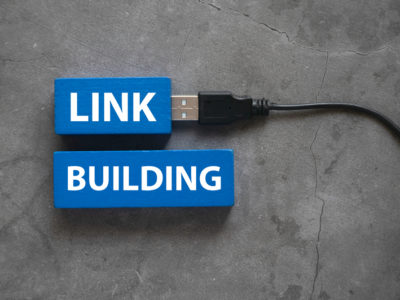Email spam filters are useful in deciding which messages end up in your inbox. Unfortunately, these filters can also make or break your marketing efforts, as almost 57% of all emails are labeled as spam. That’s countless potential leads and sales opportunities that just vanished.
The frustration increases when you’ve invested heavily into crafting compelling cold email campaigns, only to have them derailed before making an impact.
Luckily, there are methods to optimize your emails for optimal deliverability and navigate smoothly through the spam filters. From adjusting your creative approach to addressing various technicalities, a spam-conscious approach will keep your emails landing loud and clear.
What are email spam filters?
Email spam filters scan every incoming email and decide whether it goes to the spam folder, or if they are inbox-ready.
These filters utilize complex algorithms and machine learning to analyze metrics such as:
- Content
- Sender reputation
- Engagement metrics
With the help of these metrics, email spam filters can separate valuable emails you want to see from the wave of junk and unsolicited mail nobody wants. Emails such as this one:
If your emails get flagged as spam, they will likely never reach the intended inboxes, essentially missing out on potential leads and sales.
Learning to properly optimize for and navigate spam filters can be a game-changer, ensuring your emails are not sent to the spam folder.
Types of email spam filters
Email spam filters come in various forms, as they analyze different email components for spam indicators. Let’s dive into the most common types.
Content filters
These spam filters scan the email content such as the subject line, body copy, embedded links, and more; to find red flags, such as:
- Excessive buzzwords or sales lingo
- Questionable URLs or misspelled brand attempts (for example: “S0NY”)
- Unsupported claims or outrageous promises
- Poor text formatting or excessive HTML
Many content filters utilize Bayesian analysis that uses machine learning to identify unnatural word and phrase patterns that don’t align with normal human communication.
For example, the email below has ticked some of the red flags of the content filters with excessive buzzwords like “Best High Quality”, and overall poor text formatting and grammar.
In essence, content filters evaluate if the email “looks” like spam based on problematic language, content, and style choices.
Blacklist filters
These spam filters check if the sender’s email address, domain, or IP address exist on any blacklists of known spammers or poor senders. If a match is found, that email automatically gets flagged as spam.
Some of the key reasons why domains and IPs get blacklisted are:
- Sending unsolicited bulk emails that violate anti-spam laws
- Being detected with malware, viruses, or other malicious activity
Appearing on even one of the major blacklists is a red flag that can significantly impact your email deliverability and sender reputation. A scary thing is that even a legitimate email sender can get blacklisted if their IP addresses or domains get compromised or improperly configured.
Reputation filters
These spam filters evaluate the overall reputation and historical sending patterns of the email sender. Having a good IP and domain reputation is important, as major inbox providers like Gmail use reputation as a heavy signal in determining spam folder placement.
These are the signals used for reputation filters:
- Bounce rates and user complaints
- Consistency of sending volumes
- Proper authentication and security protocols
For instance, an email such as the one below is sure to tick the red flag for the reputation filters, due to its structure that screams mass email:
Remember, even a short-term spammy campaign can severely tank your reputation score, so tread carefully.
12 Ways to Avoid Spam Filters
As cold emails are defined as unsolicited mail, that means that even good-natured cold email campaigns can end up in the spam folder, negatively impacting campaign performance.
Let’s dive into 12 concrete tactics to maximize inbox delivery and keep those spam filters from derailing your cold email campaigns.
Use Your Domain For Sending Emails
Generic free email services like @gmail.com and @yahoo.com are usually not favored for cold email campaigns. Major email providers tend to have stricter spam filtering in place for these common domains, which are regularly abused by spammy senders.
Purchasing and using your branded custom domain for email helps boost credibility and improve email deliverability. It signals you are a professional sender from a legitimate organization, which warrants inbox placement.
Would you trust someone more from the first email or the second one?
The first email has a business email domain and more professional messaging, as compared to the second email which lives up to the reputation of mass spam emails sent from generic email addresses.
Authenticate Your Domain
Authentication records are crucial for proving that your domain is legitimate and authorized for email sending. This is the second step to ensure your cold emails get delivered to inboxes.
Properly implementing these protocols shows receiving servers your sender integrity, as opposed to appearing as a spammer that is spoofing a reputable domain.
Key authentication protocols to implement are:
- SPF (Sender Policy Framework): SPF records specify the IP addresses and email servers approved for sending emails from your domain.
- DKIM (DomainKeys Identified Mail): DKIM allows you to assign a unique encrypted signature to your outgoing emails to verify the email originated from your domain.
- DMARC (Domain-based Message Authentication, Reporting & Conformance): This protocol ensures the “From” address on emails is aligned with SPF and DKIM authentication, which protects your domain from unauthorized use.
Ensure these protocols are properly implemented, which you can review with online checker tools.
Keep a Good Sender Score
Every email sender starts with a neutral “sender reputation” that gets updated based on the quality and consistency of your emailing habits. This score directly impacts the ability of your emails to enter inboxes.
Maintaining a positive sender reputation is critical in maintaining good email deliverability. Here are some factors that go into its calculation:
- Consistent email volumes over time with no massive spikes
- Low bounce rates
- Low complaint rates and spam trap hits
- Positive engagement signals like opens and clicks
Keeping up with the factors from above will ensure your domain has a good sender score, which certain tools, such as Barracuda, can outline:
Select a Reputable Email Service Provider (ESP)
Choosing a reliable email service also indicates successful inbox delivery of your cold emails.
A quality email service provider should feature:
- Robust email authentication and security infrastructure
- Proactive spam filter compliance measures
- Built-in tools to protect and optimize your sender reputation
- Regularly updated relations with major inbox providers
A faulty or questionable ESP may enable spam tactics that can result in your emails being blocked. That’s why you want a provider with a solid track record.
Monitor Your IP Address Reputation
When it comes to sender reputation, your IP address is as important as your domain and email credentials. Major inbox providers keep a close look at the cleanliness of sending IPs.
Many ESPs can provide you with a dedicated IP address just for your email campaigns. While this is highly convenient, don’t ignore monitoring your IP address reputation.
Here are some best practices for doing so:
- Use tools to check your current IP’s blacklist status
- Monitor for any security red flags like spam traps or account compromises
- Maintain a warm-up strategy when starting email blasts from a new IP address
- Rotate IPs periodically to maintain a positive reputation
By monitoring and maintaining a positive sender reputation, you ensure that spam filters see your emails as legitimate. This not only safeguards your reputation but also protects against potential security breaches.
Incorporating IP geolocation can further enhance your practices to ensure emails avoid spam filters. By using tools to identify IP location, you can discern patterns and identify suspicious activity, ultimately enhancing sender reputation and reducing blockage. This geographic context may help fine-tune strategies for better deliverability.
Refine Your Cold Email Content
Poorly written cold emails look spammy even before opening them. Subject lines packed with general wording, zero personalization, and obvious sales pitches are just a couple of high-level examples.
Thankfully, polishing your cold email content for more quality and relevance can yield much higher engagement and boost spam filter compliance.
Here are some tips on how to improve your cold email copy:
- Write value-oriented cold email subject lines tailored to your recipients
- Open with a friendly and personalized greeting – never with “Dear Sir/Madam”
- Convey your unique value proposition clearly
- Use a casual and conversational writing tone, like you are speaking to a friend
- Directly relate your offering to the recipient’s potential pain points and goals
- Never resort to desperate clickbait and excessive urgency
Let’s take an example of cold email content done right and wrong based on the email opener:
The second email opener is personal, offers clear value, and reads like a human conversation versus a plain sales pitch.
For additional tips and insights, check out how to run a cold email sequence.
Steer Clear of Spam-Triggering Words
While spam filters have evolved far beyond just scanning for individual words, there are still certain terms and phrases that can raise spam traps when overused.
Here are a couple of words and phrases to avoid or use sparingly:
- Excessive currency symbols, amounts, or references.
- Overly urgent calls-to-action (“Act Now!”, “Don’t Miss Out!”)
- Exaggerated promises or miracle claims (“Gain 100x Revenue in Three Months!”)
- Shady or overused terms like “Get Rich Working From Home”)
Here is a sample email copy that triggers the spam traps:
To fix your email copy and reduce the risk of spam traps, you can use a cold email platform to do this swiftly. Hunter Campaigns analyzes your email copy and ranks it as spammy or non-spammy along with an explanation. Let’s see how it ranks the first email after reworking it:
We’ve removed all the spam words and adopted a more natural messaging style that eliminates overly sales-y language. It seems like it passed the spam check.
Balance Text and Images Wisely
Although visuals enhance email open rates by almost 10%, an email composed of only images is usually an instant red flag for spam. Spammers often employ this tactic to bypass text-based filtering.
Alternatively, an email stuffed with unformatted text is similarly suspicious and adds up to poor user experience.
The best balance is a healthy ratio of quality images that complement your well-formatted text sections. Here are a few guidelines:
- Include sufficient text for messaging and context – don’t expect images to do all the work
- Break text into shorter sections and paragraphs for scannability
- Optimize images to display properly without excessive file sizes
Here is a good example of using text with an image inside an email that ticks all the above marks:
Remember, when you balance text and visuals properly, this signals a professional and legitimate email, rather than shady spam.
Ensure Link Quality within Emails
Linking to spammy or virus-filled domains or other low-quality domains is a great way to get your emails in spam folders.
Always vet the quality and reputation of any URL included in your cold emails. Some link patterns to avoid are:
- Sites recently flagged as spam/malware risks
- Excessive affiliate redirects
- Underdeveloped websites with low-quality content
- Untrusty domains with a lack of credentials
Prioritize linking to well-established and high-authority websites that have high credibility and relevance to what you are discussing.
For example, linking to an authoritative site in the digital marketing niche promotes more legitimacy than linking to a digital marketing site with AI-generated content.
Conduct Email Tests Before Sending
Once you’ve optimized your cold emails for deliverability, make sure to run deliverability tests before deploying your cold email campaign.
This quality assurance step involves sending test versions of your cold email campaign to:
- Diverse inboxes across major email clients (such as Gmail, Outlook, and Yahoo)
- Corporate domains or role-based accounts (IT, sales, marketing, etc.)
- Tooling inboxes specifically designed to check for spam
Conducting email tests helps identify issues such as rendering issues or bad formatting, links that trigger security flags, and unforeseen spam filter triggers.
Don’t skip this step, as you want all the insights you can get regarding deliverability challenges before fully launching your cold email campaigns.
Avoid Buying Email Lists
Buying email lists is a shortcut that comes with massive deliverability risks such as:
- No opt-in consent from recipients (can come with massive spam complaints)
- Contacts are often outdated or invalid (high bounce rates)
- Questionable sourcing damages your reputation by association
- Suspicious legality in many regions with anti-spam and data privacy legislation
Make sure that the emails from the list are verified like this:
And not unverified like this:
While this alternative option takes more effort, it pays off in the long term for your email deliverability, open rates, conversions, and other important email marketing data.
Provide Easy Unsubscription Options
Making it excessively difficult for people to easily unsubscribe from your emails is one of the common mistakes that negatively impact your email deliverability.
Nowadays, every cold email campaign must include:
- Clear unsubscribe link that triggers opt-out with one click
- Option for recipients to update their email preferences
- Ability to submit feedback, including registering spam complaints
You can additionally explain to recipients how they were added to your email list, and what type of content they can expect in the future.
All of this ensures that your cold email campaigns comply with ethical and legal standards. The easier you make it for people to manage their email preferences, the fewer abuse reports you’ll get.
Conclusion
In the endless struggle against email spam filters, there is no silver bullet solution. It requires a multifaceted approach and commitment to best practices.
However, the rewards of ensuring your emails land inboxes make it well worth the effort.
Mastering these principles is your greatest asset for cutting through the clutter and fostering real connections.





